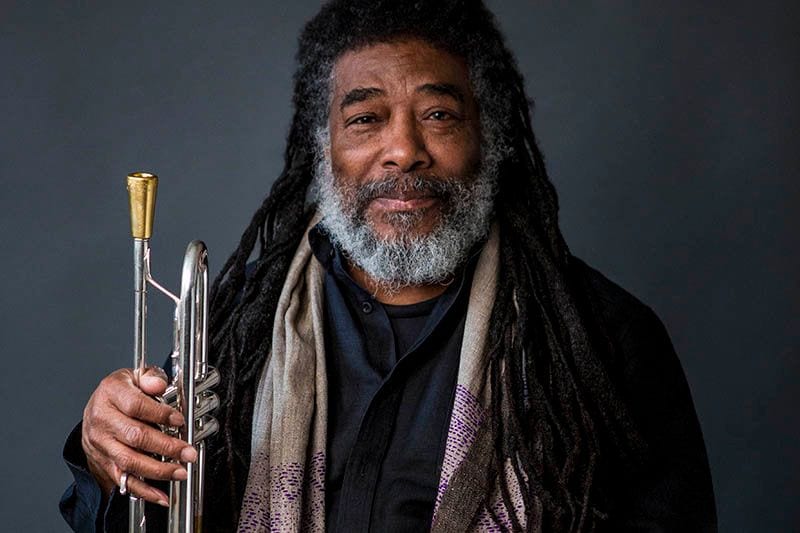
Sacred Ceremonies is dedicated to the late Milford Graves, who died in early 2021. As a percussionist, he was peerless. As a sideman, he always rose above his duties. He transcended what it meant to be a part of a “rhythm section” as far back as the late 1950s. To call him a drummer would be like calling Picasso a doodler, and trumpeter Wadada Leo Smith’s Sacred Ceremonies is a fitting, if not comprehensive, tribute to Graves’ legacy.
The legendary percussionist performs on only two-thirds of the album, but Sacred Ceremonies is just five minutes shy of being three hours long. Smith duets with Graves on the first disc, takes a turn with bassist Bill Laswell on the second and brings all three of them together on the final disc. All three men have worked with one another on various projects over the years, making Sacred Ceremonies a special document of musical kinship as well as a bold take on improvised music.
Smith is credited for composing ten of the triple album’s pieces, while the rest are attributed as group compositions. No matter whose name appears next to the title, all selections bear the unmistakable mark of musicians feeding off one another. Smith may have sketched out the melodies, but Laswell and Graves carved their parts from thin air in ways that only they could have achieved. Sacred Ceremonies is classified as “jazz” by default, but only broad strokes will do in the descriptive department. For all the avant-garde and free jazz elements at work here, Sacred Ceremonies is the sound of Smith drifting forward, grabbing inspiration from his surroundings and feeding them into his horn as he continues a music career that has lasted close to 50 years now. It’s the sound of a never-ending search.
Sacred Ceremonies opens with the Smith-penned “Nyoto”, a piece in three movements. If listening through headphones, one can easily hear how Graves sets the scene for things to come. Not only is the rhythmic foundation of his drumming unorthodox, but one can hear a variety of timbres coming through. In this framework, Smith is free to keep his notes and melodic lines going as long as he pleases. As “Nyoto” moves through its lengthy second movement wraps up on the next track, Smith starts to travel a more abstract route with triple-tonguing and searching for notes in a ridiculously low register for the trumpet. Don’t worry, though; he can still stretch his range in the opposite direction.
When Bill Laswell enters the picture on disc two, Graves’ confounding drum kit is replaced by the velvety sound of the esteemed producer’s rainy-day electric fretless bass. Here, the bass is electronically manipulated for background purposes instead of being a rhythm instrument. That’s just one reason why the song “Tony Williams” stands out. Despite no percussionist present, the number named after the late, great drummer rides on an undeniable groove. Smith’s melody is simple, meaning that it can get lodged in your head quicker than anything else here. If you don’t believe me, find a sample online, and I guarantee your toe will have something to say about it. By the time the final third of Sacred Ceremonies kicks in, Laswell is off his atmospheric duties and feels his way through the jam the way a traditional double bassist would (though it doesn’t keep him from the wah pedal on “Ruby Red Largo – A Sonnet”). Graves has returned to help drive the jams forward rather than just keep them together.
The shortest song on the last disc, at six-and-a-half minutes, is named “An Epic Journey Inside the Center of Color”. You may be thinking that it takes a considerable amount of gall to give one of your compositions a name like that. But as I sit here trying to objectively evaluate a massive album like Sacred Ceremonies, I realize I’m trying to work myself out of a similar corner. An enormous amount of music is pouring from these three discs, yet discussing it likely won’t bring you any closer to understanding without listening.
As Ralph Gleason said of Miles Davis’ Bitches Brew, “There is so much to say about this music. I don’t mean so much to explain about it because that’s stupid, the music speaks for itself.” If Sacred Ceremonies does indeed speak for itself, then it’s up to the listener to complete the circle. Help send Graves off in true art-for-art’s-sake fashion.

